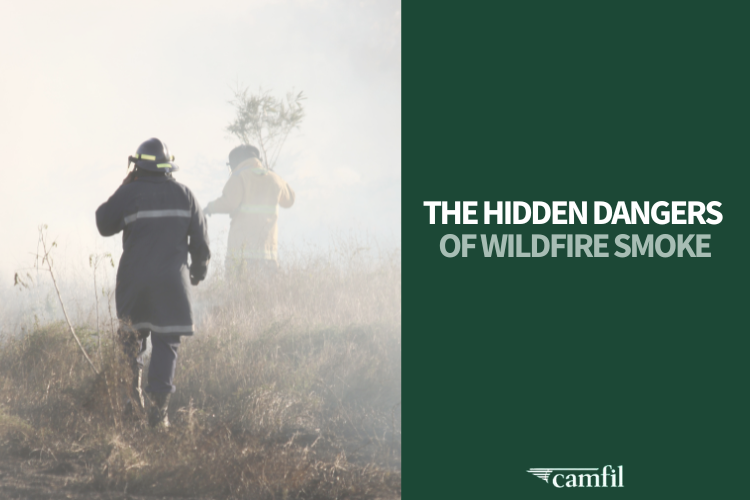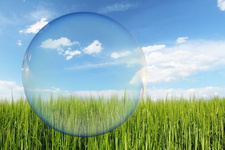As wildfire season approaches across North America, Camfil USA air filtration experts are highlighting the importance of preparing indoor environments against smoke contamination. 2025 has already seen extreme wildfire damage in places like Southern California and New Jersey. The wildfire forecast for the rest of the year suggests another challenging season ahead, with concerns that climate conditions may again create extensive fire events similar to those experienced in recent years.
"Wildfire smoke isn't just about tiny particles; it also contains a mix of harmful gases like carbon monoxide and volatile organic compounds," says Gary Chrismon, Molecular Segment Manager at Camfil USA. "To effectively combat these gaseous pollutants, specialized air filters with activated carbon are required, as standard particle filters—even HEPA filters—won’t address these invisible dangers alone."
Understanding the Hidden Dangers of Wildfire Smoke
Wildfire smoke's impact extends far beyond the visible haze. These fires release not only fine particulate matter (PM2.5) but also harmful gases that can trigger acute respiratory issues, including:
Ground-level ozone formed by chemical reactions in smoke
Volatile organic compounds that contribute to indoor air pollution
Gaseous contaminants, including nitrogen oxides and sulfur dioxide
Recent studies indicate that even communities a thousand miles from active fires can experience significant air quality degradation as pollutants are transported by the wind. Indoor spaces without proper filtration can develop pollution levels exceeding outdoor readings due to the accumulation inside buildings.
Indoor Air Quality Strategies for Wildfire Season
With most Americans spending approximately 90% of their time indoors, maintaining clean indoor air during wildfire events has become a public health priority. Camfil experts recommend a multi-layered approach to protection:
Upgrade HVAC filtration to capture smaller particles, ideally using filters rated MERV 14/14A or higher for capturing fine particulate matter
Consider supplemental air purification with standalone units equipped with both HEPA and molecular filtration capabilities in areas where central system upgrades aren't feasible
Seal building envelope vulnerabilities to prevent smoke infiltration through gaps around windows, doors, and other openings
Monitor indoor air quality using tools that measure particulate levels to verify filtration effectiveness
"Buildings equipped with standard filtration systems often struggle to handle the extreme pollution loads presented by wildfire smoke," notes Chrismon. "The key concerns are both particulate removal and addressing the molecular pollutants that can cause discomfort and health risks in indoor spaces."
Educational Resources Now Available
As part of Air Quality Week (May 5-9, 2025), Camfil USA has released educational materials to help facility managers, school administrators, healthcare professionals, and homeowners prepare for wildfire impacts. These resources explain the science behind smoke contamination and outline practical, evidence-based approaches to maintaining healthy indoor environments.
The comprehensive guide includes:
Understanding the Air Quality Index (AQI) and its health implications
Building-specific considerations for different facility types
Filter selection guidance based on protection needs
Interviews with subject matter experts on limiting exposure to wildfire smoke
These educational materials aim to provide communities with practical knowledge that extends beyond immediate wildfire response to year-round indoor air quality improvement.
Looking Ahead to Tomorrow: Asthma and Your Health
Tomorrow, Air Quality Week continues with a focus on "Asthma and Your Health," examining the critical relationship between indoor air quality and respiratory conditions. The session will explore how proper filtration can reduce common asthma triggers and improve the quality of life for the millions of Americans living with asthma. Join us as we discuss practical strategies for creating asthma-friendly indoor environments in homes, schools, and workplaces.
To learn more about protecting indoor air quality during wildfire season or to access Camfil's free educational resources, call 888-599-6620 or visit www.camfil.com/en-us/insights/air-quality/wildfire-smoke-filter-solution-guide.
About Camfil USA

For more than half a century, Camfil has been helping people breathe cleaner air. As a leading manufacturer of premium clean air solutions, Camfil provides commercial and industrial systems for air filtration and air pollution control that improve worker and equipment productivity, minimize energy use, and benefit human health and the environment.
MEDIA CONTACT:
##
For media inquiries, please contact:
Lynne Laake
Camfil USA Air Filters
T: 888.599.6620
F: Friend Camfil USA on Facebook
T: Follow Camfil USA on Twitter
Y: Watch Camfil Videos on YouTube
L: Follow our LinkedIn Page







